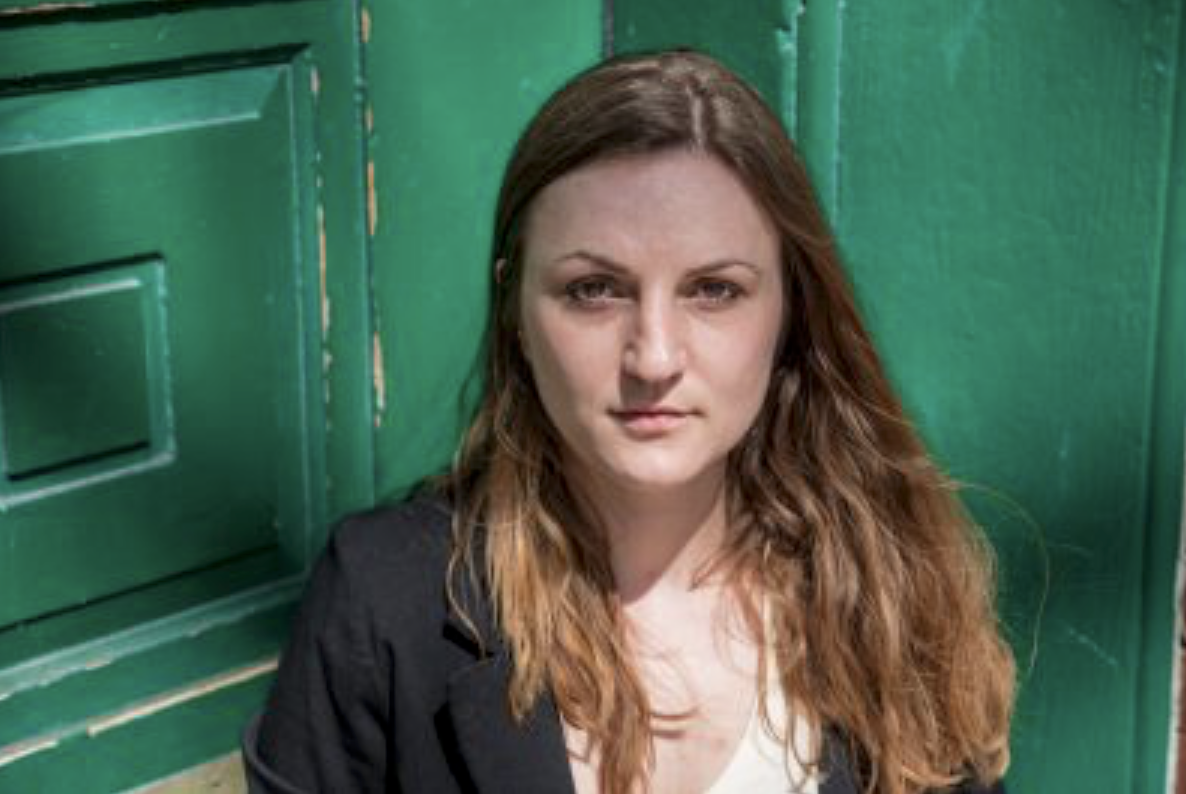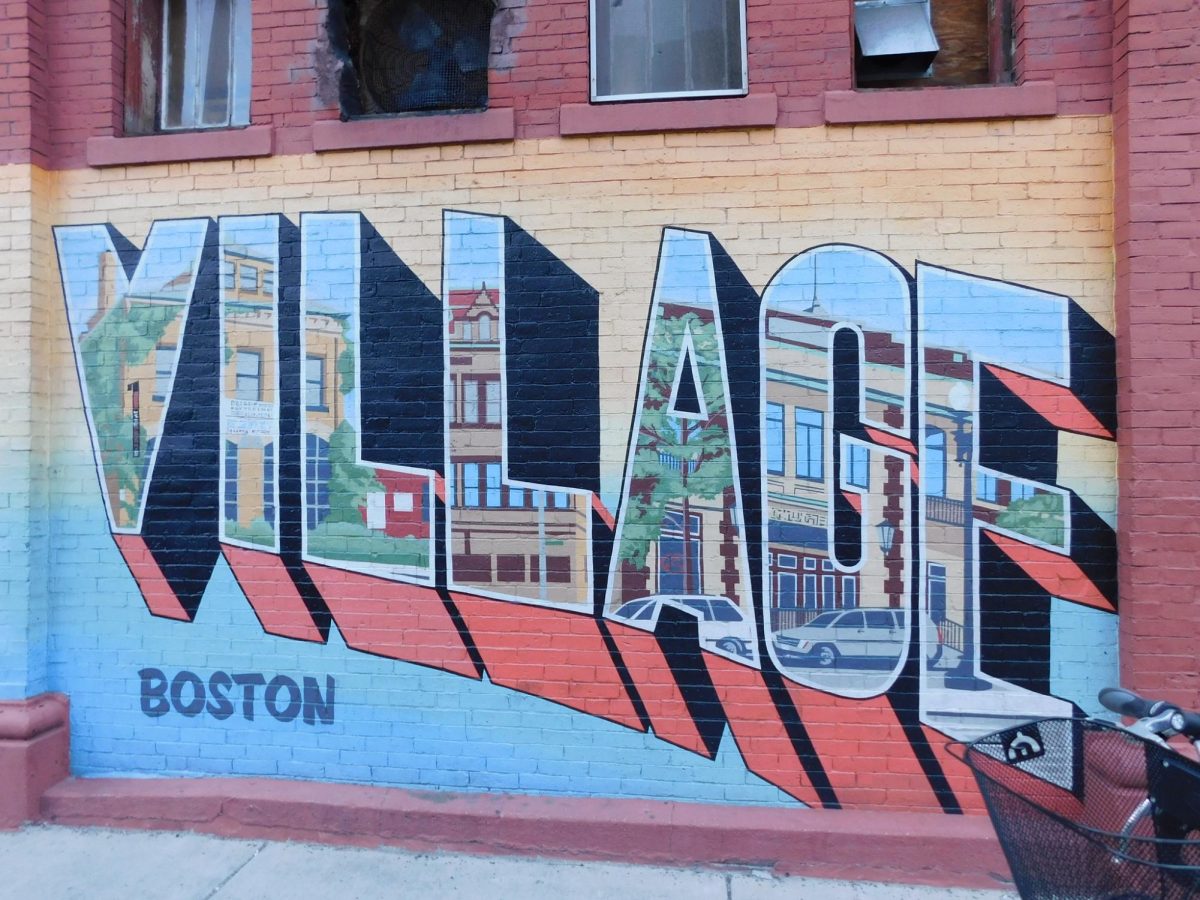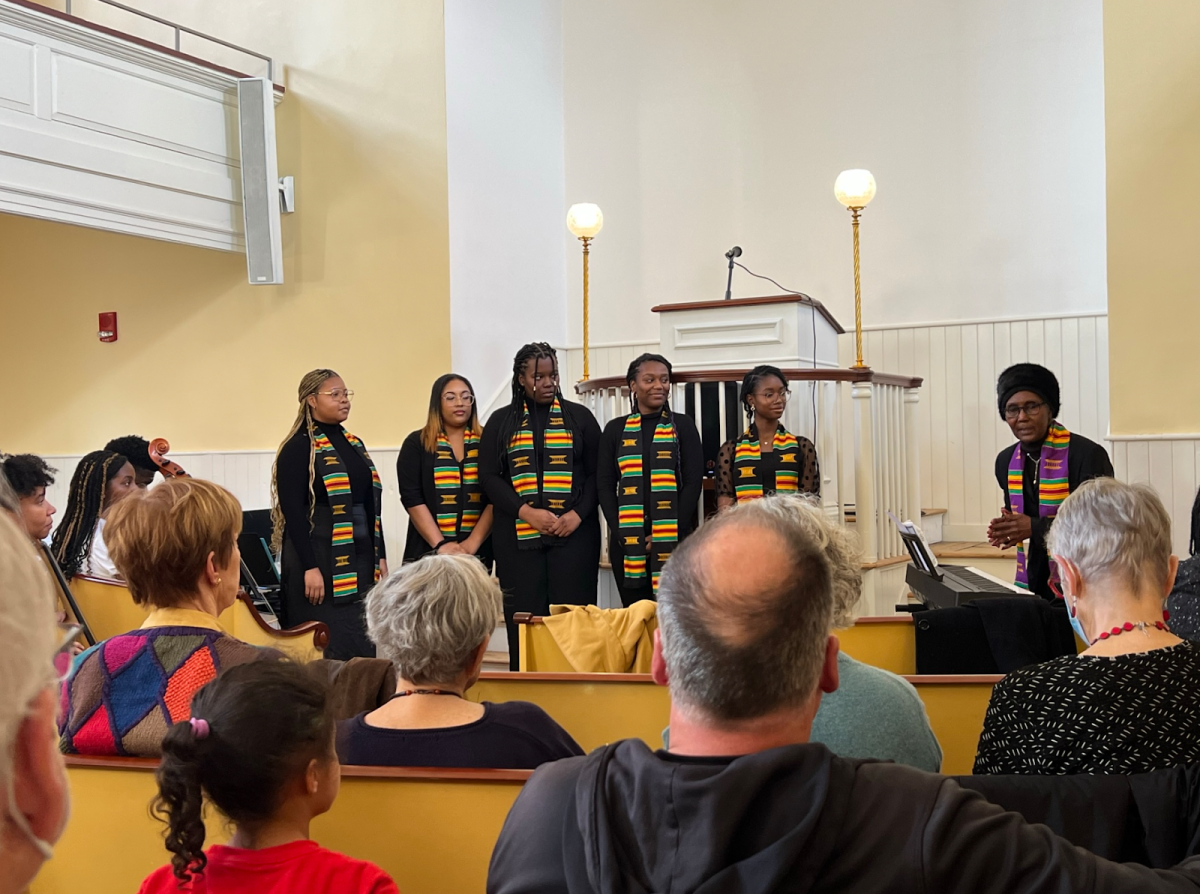One of Mara Zellman’s favorite drinks is an affogato: a scoop of vanilla ice cream sunk in espresso, served at one of Boston’s North End coffee shops. She sips it outdoors and barefoot, auburn hair tied in a loose spray at the nape of her neck, cross-legged in a strip of grass between Haymarket station and Hanover Street.
Her drink of choice used to be a bottle of Coke, her “ritual” to rid the back of her throat from the burn of snorted heroin.
Zellman’s journey from heroin to high-end coffee was facilitated by thousands of plastic cups of sticky, pink methadone. Methadone is one of three medications approved by the Food and Drug Administration to help treat opioid addiction. Methadone and buprenorphine, commonly known as Suboxone, help curb withdrawal symptoms. They are opioid agonists, meaning they activate the same receptors in the brain as heroin. The third option, naltrexone, blocks the brain’s ability to get high, acting as forced abstinence from the effects of drugs.
“I have a love-hate relationship with the methadone clinic,” said Zellman.
Methadone is only dispensed in daily doses from specialized clinics. Zellman would get up at 6 a.m. every day to drive to the clinic before it closed at 8. If a patient failed to show up for any reason, the providers could refuse to give their medication, kicking them out of the program. It is also infamously challenging to taper off methadone once you’ve started treatment.
“I was told about the methadone clinic, ‘Oh no, don’t get on that because you’ll never get off,’” Zellman said.
Despite its challenges, Zellman acknowledges that methadone saved her life. Doctors and academics agree that, whatever their flaws, medications like methadone or Suboxone are the best bet to treat this generation’s public health crisis. But most often the people who need these treatments don’t get them. It’s shame, it’s money, it’s limited access to clinics. Most insurance companies are loath to cover addiction treatments and zoning committees like to keep dispensaries out of their backyards. Even the surgeon general, Dr. Jerome Adams, is advocating for greater access to treatment options.
In a Jan. 25 speech at Boston University School of Public Health, Adams said, “Only one out of three treatment centers offers medically assisted treatment, even though we know that is the standard of care.”
From heroin to methadone: “I was chained.”
Zellman’s high school years followed a familiar cautionary tale. She and her three closest friends would get drunk in the woods around their hometown of Gloucester, MA, or find parties in basements where parents weren’t home. Blackout weekends eventually bled into Thursday and Sunday nights. Drifting 20-somethings at high school gatherings, who Zellman called “party people,” offered her Percocet, Vicodin and cocaine.
Shortly after high school graduation, Zellman was living with her boyfriend, who was four years her senior. One of his friends introduced her to powdered heroin.
They would get high, then “I would clean the house. We would go out to dinner,” she said. “Things were normal. I could do my drugs and keep up with life.” She worked at a sandwich shop and kept a small circle of friends. About two years into this rhythm, she switched from snorting to injecting. That’s when she says she began struggling to hold down a job.
At 22, she was arrested for possession of heroin while leaving her dealer’s apartment with her boyfriend. She wondered if seeking treatment for her addiction would bolster her prospects in court. She scheduled an intake appointment at a local methadone clinic.
“That’s what got me [to] the clinic, was fear,” she said. “I felt like I didn’t have any other choice.”
Zellman, now 30, used several different methadone clinics in the Gloucester area over the next several years, but says the experience was similar at each. She would scan a plastic ID card at the entrance, then wait in line at a plexiglass ticket window. A nurse on the other side would hold a plastic cup under a dispenser that dripped a bubblegum-pink liquid, similar in appearance to children’s cough syrup. There was a pitcher of water nearby to dilute the syrup before drinking it and returning the cup.
“I felt like I was chained,” Zellman said.
She was taking 125 mg of methadone per day, a very high dose for her 130-pound body, especially once she became pregnant. She stayed on that dose throughout her pregnancy and reduced it to 80 mg once her son was born, but says she regrets not tapering sooner.
Whenever her dad called, he would ask, “When are you getting off that methadone?” She relapsed once with heroin and several times with alcohol, but she always came back to the clinic.
“As soon as I got on, I was like ‘I’m getting off in six months,’ Zellman said. “I got off in five years.”
As she recounted the withdrawal from tapering off methadone, she tensed her shoulders and cringed. August 2018 will mark four years since she’s taken methadone or any drugs or alcohol. “For me, being on the methadone wasn’t good enough anymore. For me, being clean and sober, completely clear of any drugs or alcohol, was my mission. I wanted it. I did. I do.”
It’s called the “standard of care.”
Statistically, Zellman is one of the lucky ones: Only 10 percent of people with a substance abuse disorder receive specialized treatment for their addiction, according to a 2016 report from the surgeon general.
Even when some form of treatment is available, like counseling, it rarely includes medication. The majority of counties in America do not have any facilities that offer addiction medications, and even fewer of these accept Medicaid, according to data from anfAR, an AIDS research foundation.
Public health officials have recognized that medications are the proper treatment response to opioid abuse. Dr. Elinore McCance-Katz, the head of the Substance Abuse and Mental Health Services Administration (a federal agency), said in a February 2014 interview, “Individuals with chronic relapsing diseases should have access to MAT,” referring to the common acronym for medication-assisted treatment. “It’s just the standard of care.”
Making these services more widely available will require a paradigm shift in how addiction is treated. “We approach substance abuse treatment through a different lens, one where people assume that the path to health is through detoxification and sobriety,” said Leo Beletsky, a Northeastern University professor of law and public health. “That view goes back many years to a time when people didn’t really understand what addiction was and saw it as a spiritual character flaw. That’s where prejudice against medication-assisted treatment comes from.”
Some groups, including Narcotics Anonymous, a popular 12-step program, see opioid agonists as abetting addiction. NA members who use these medications are generally not allowed to lead or speak at meetings. The organization’s website states, “Our program approaches recovery from addiction through abstinence, cautioning against the substitution of one drug for another.”
The surgeon general, Dr. Jerome Adams, has advocated in the political sphere for changing the narrative surrounding addiction. “There’s a lot of compassion fatigue out there,” Adams said in his aforementioned speech. “But people have got to understand this is a chronic disease.”
This understanding of addiction as disease follows years of research onhow substances change the brain. Adams’ empathy has roots in his own family; his younger brother, Phillip, has cycled in and out of prison for drug-related crimes since 2002. Phillip is now serving time in a state prison about 25 miles away from his brother’s Maryland office.
Beletsky said the physical scarcity of addiction clinics is a barrier to access for many patients. “[Clinics] are very, very few and far between and they are generally located in lower-income or industrial areas,” he said. “Communities generally do not want them in their backyard.”
However, it’s not just wary neighbors who are reluctant to host people in addiction recovery.
“Healthcare providers stigmatize addiction in many of the same ways people in the criminal justice system do and the people in the general public do,” Beletsky said. “There’s a lot of thinking of, ‘I don’t really want those people in my practice.’”
“Addiction treatment that doesn’t suck,” or a potential solution
Colin Beatty is a provider in the Boston area that does want “those people” in his practice.
In 2011, Beatty was a business consultant for Boston’s top hospitals like Tufts Medical, Massachusetts General Hospital and Dana Farber Cancer Institute. Then his older sister died at age 44 after a drug overdose. While grappling with his grief, he analyzed ways that addiction treatment could improve. By 2015, he was ready to open his own addiction treatment center, but couldn’t convince a landlord to give him a chance.
“I looked at 60-plus locations for long-term leases,” said Beatty, now 46. A few gray hairs peek out under his snapback hat, but his youthful vernacular is dotted with “bro” and profanities. “I met with one landlord three times. Then I got an email that read, ‘We really like you… but we don’t like your kind.’ I had a pile of money and they wouldn’t take it.”
He eventually bought a three-story house in Arlington and founded Column Health, an outpatient addiction clinic. Column Health offers therapy, social work services and addiction medications, all covered under major insurance and MassHealth, Massachusetts’ Medicaid program.
Beatty described his approach to addiction care as “subversive.” Column’s slogan, for instance, is “Addiction treatment that doesn’t suck.”
Beatty’s staff says he frequently compares addiction treatment to high-end cancer care at Dana Farber to emphasize what he sees as massive inequities in health care treatment.
“I did a lot of work with Dana Farber,” Beatty said, “And never once did I hear someone get yelled at for their cancer returning. And yet, with regularity, we rebuke and yell at and disparage those individuals whose disease returns and they relapse.”
This same mindset applies to the upscale, unapologetic appearance of the Column clinics.
“Look at the physical plan, the location, the architecture, the interiors, the placement in the community that these clinics take versus the cancer clinics take,” Beatty said. “You go into a back alley to go into a dingy basement and sit on metal chairs that were stolen from the church down the street and still have the stencil of ‘St. Elizabeth’s’ on it. What does that tell you as a patient? What does that tell you as a provider? How do we see this as a disease landscape versus the Dana Farbers of the world?”
The Somerville center, one of four opened in the past three years, wouldn’t look out of place in an interior design catalog. High-end magazines like Forbes and Luxury are spread out on dark wood coffee tables. The clinic staff includes a ‘director of culture,’ and the Somerville storefront window serves as a rotating art gallery featuring work from around the country. Beatty believes an upscale physical environment is an important equalizer—both externally, between addiction treatment and other health care specialties, and inside the practice, where he says 50 to 60 percent of Column’s patients are Medicaid beneficiaries.
Providers at Column Health support addiction medications as a possible long-term tool and only encourage patients to taper off if they make that their own goal. Patients are required to combine medication with other treatments, such as individual, group and art therapy. It seems to be working. Beatty said fewer than 10 percent of Column patients relapse within a year, as opposed to 60 to 90 percent instudies of inpatient detox programs.These data make Beatty hopeful that addiction treatment will continue to improve.
“When you look historically, cancer was stigmatized a century ago in the same way AIDS was stigmatized decades ago and the same way addiction is now,” Beatty said. “Those kinds of shifts of attitude, understanding and science start to make you understand that today’s landscape of addiction doesn’t have to remain that way. We can move the dial.”
Zellman still participates in her 12-step program, but doesn’t believe a support group should either condemn or recommend methadone to people recovering from addiction.
“If we all went about our lives, or our recovery, asking somebody else what they thought about our recovery, I don’t think any of us would be ok,” Zellman said.
She’s currently attending community college with plans to transfer to a four-year school and pursue a career in social work. Her son is now in first grade. Zellman still has a live-and-let-live attitude about whether someone should be using methadone.
“The thing with the methadone is people are in this argument: ‘It’s good, it’s bad,’” she said. “Should we make it more accessible? Should we close all the clinics? This is when these questions aren’t about the person anymore, about the human. It’s about money. And I think that’s where we go wrong. We lose the human-ness when we start asking these questions. And yet at the same time, we have to ask them. How do we make this right?”







